Oral Session
MRI Safety
Joint Annual Meeting ISMRM-ESMRMB & ISMRT 31st Annual Meeting • 07-12 May 2022 • London, UK

16:45 |
0577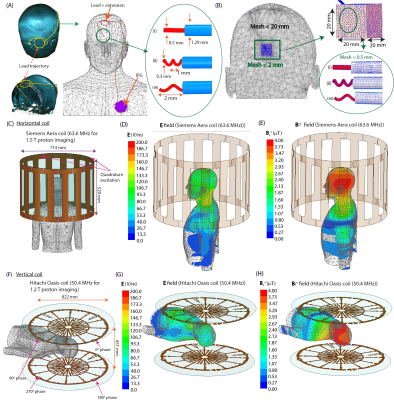 |
Field orientation matters: vertical open-bore scanners significantly reduce RF heating around implanted deep brain stimulation devices
Jasmine Vu1,2, Bhumi Bhusal2, Bach T Nguyen2, Pia Sanpitak2, Elizabeth Nowac3, Julie Pilitsis4, Joshua Rosenow5, and Laleh Golestanirad1,2
1Biomedical Engineering, Northwestern University, Evanston, IL, United States, 2Radiology, Northwestern University, Chicago, IL, United States, 3Illinois Bone and Joint Institute, Wilmette, IL, United States, 4Neurosciences & Experimental Therapeutics, Albany Medical College, Albany, NY, United States, 5Neurosurgery, Northwestern University, Chicago, IL, United States
Radiofrequency (RF) heating of tissue around active electronic implants limits MRI accessibility for patients with deep brain stimulation (DBS) devices. Here, we show that RF heating had an 11-fold reduction on average for a DBS device with clinically relevant, patient-derived lead trajectories during MRI in a 1.2 T vertical scanner compared to a 1.5 T horizontal scanner. Electromagnetic simulations showed up to a 14-fold decrease in the maximum of the 0.1g-averaged SAR, which was consistent in leads with various internal wire geometries/electrical lengths, suggesting that our experimental results could potentially generalize to DBS devices from other manufacturers.
|
|
| 16:57 | 0578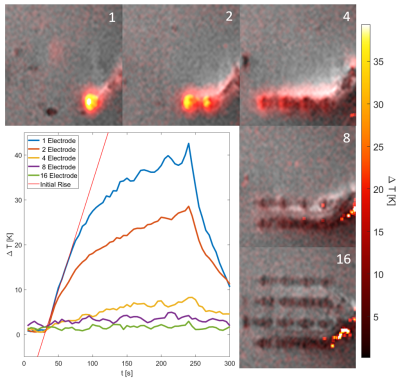 |
RF Heating of Multi-channel icEEG Electrodes
Thomas Lottner1, Simon Reiss1, Stefan Rieger2, Johannes Fischer1, Lars Bielak1, Ali Caglar Oezen1, Martin Schüttler2, and Michael Bock1
1Dept.of Radiology, Medical Physics, Medical Center University of Freiburg, Faculty of Medicine, University of Freiburg, Freiburg, Germany, 2CorTec GmbH, Freiburg, Germany
Active implantable medical devices restore body function in patients with neurological or other disorders, increasing their quality of life. The RF-safety assessment of neural implants is complex due to the increasing use of multi-channel systems. In this study, the heating characteristics of intracranial EEG electrodes with increasing number of channels is investigated. this study shows that, for the given configurations, the RF-induced heating decreases, when the number of channels of the device is increased. Hence, increasing the grids of planar electrodes might be used to decrease the RF induced heating.
|
|
17:09 |
0579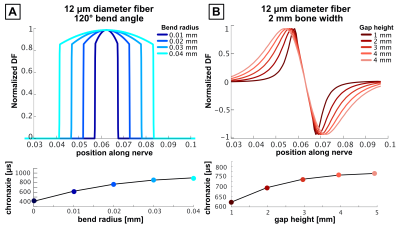 |
Influence of electric field and axon geometry on peripheral nerve stimulation chronaxie
Natalie G Ferris1,2, Valerie Klein3,4, Bastien Guérin4,5, Lawrence L Wald2,4,5, and Mathias Davids3,4,5
1Harvard Graduate Program in Biophysics, Harvard University, Cambridge, MA, United States, 2Harvard-MIT Division of Health Sciences and Technology, MIT, Cambridge, MA, United States, 3Computer Assisted Clinical Medicine, Medical Faculty Mannheim, Heidelberg University, Heidelberg, Germany, 4A. A. Martinos Center for Biomedical Imaging, Department of Radiology, Massachusetts General Hospital, Charlestown, MA, United States, 5Harvard Medical School, Boston, MA, United States
We calculate the impact of peripheral nerve geometry (bend angle, radius of curvature, and axon diameter) and electric field characteristics (hot-spot amplitude and extent) on the chronaxie of nerve stimulation to better understand the variability in experimental chronaxie values seen with MRI gradient coils.
|
|
| 17:21 | 0580 |
Increasing Peripheral Nerve Stimulation Thresholds Using Gradient Array Coils
Reza Babaloo1,2, Manouchehr Takrimi2, and Ergin Atalar1,2
1Department of Electrical and Electronics Engineering, Bilkent University, Ankara, Turkey, 2National Magnetic Resonance Research Center (UMRAM), Bilkent University, Ankara, Turkey
Recent high-performance gradient coil designs are primarily limited by Peripheral Nerve Stimulation thresholds rather than hardware. Electrical fields induced by gradient switching may stimulate nerves within the human body if they exceed predefined thresholds. Gradient array coils can reduce the maximum electric field by optimizing feeding currents while generating the desired magnetic field profile within a specified region of interest. Another degree of freedom provided by array configuration is the ability to generate a flexible shaped region of interest, which allows for electrical fields manipulation to increase peripheral nerve stimulation thresholds.
|
|
| 17:33 | 0581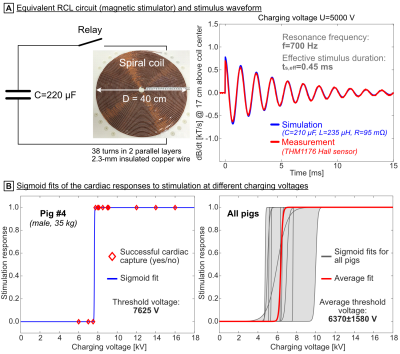 |
Measurement of cardiac magnetostimulation thresholds in pigs
Valerie Klein1,2, Jaume Coll-Font2,3,4, Livia Vendramini2, Donald Straney2, Mathias Davids1,2,3, Natalie G. Ferris2,5, Lothar R. Schad1, David E. Sosnovik2,3,4,5, Christopher Nguyen2,3,4, Lawrence L. Wald2,3,5, and Bastien Guérin2,3
1Computer Assisted Clinical Medicine, Medical Faculty Mannheim, Heidelberg University, Germany, Mannheim, Germany, 2Department of Radiology, Massachusetts General Hospital, A. A. Martinos Center for Biomedical Imaging, Charlestown, MA, United States, 3Harvard Medical School, Boston, MA, United States, 4Cardiovascular Research Center, Cardiology Division, Massachusetts General Hospital, Charlestown, MA, United States, 5Harvard-MIT Division of Health Sciences and Technology, Cambridge, MA, United States
We measured cardiac magnetostimulation thresholds in ten healthy pigs by discharging a 220-µF capacitor into a flat spiral coil placed close to the pigs’ torso. We used MR Dixon images to locate the porcine heart and determine the relative coil position to calculate the B-field in the heart (Biot-Savart). The average threshold for cardiac magnetostimulation during diastole was dB/dt≈1570±320 T/s at the center of the heart. This value is >10X greater than the IEC 60601-2-33 cardiac dB/dt limit for the effective stimulus duration of the magnetic stimulator system used in the experiments (0.45 ms).
|
|
17:45 |
0582 |
A web-accessible tool for Temperature Estimation from SAR Simulations (TESS)
Eros Montin1, Giuseppe Carluccio1, Christopher Collins1, and Riccardo Lattanzi1,2
1Center for Advanced Imaging Innovation and Research (CAI2R) Department of Radiology, New York University Grossman School of Medicine, New York, NY, United States, 2Vilcek Institute of Graduate Biomedical Sciences, New York University Grossman School of Medicine,, New York, NY, United States
TESS, Temperature Estimation from Sar Simulation, is a web-based application that performs safety assessments of MRI exams. It numerically solves modified versions of the bioheat equation that include parameters such as temporal variation of core body temperature and various physiological parameters. A web-based graphical user interface, accessible via the Cloud MR framework, enables users to set up simulations and display results.
|
|
17:57 |
0583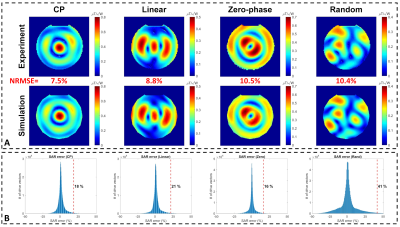 |
Safety Assessment of Custom-Built Multi-Channel RF Coils: EM Modeling Uncertainties
Alireza Sadeghi-Tarakameh1, Jerahmie Radder1, Russell L. Lagore1, Nader Tavaf1, Xiaoxuan He1, Andrea Grant1, Lance DelaBarre1, Luca Vizioli1, Xiaoping Wu1, Edward Auerbach1, Steen Moeller1, Gregor Adriany1, Gregory J. Metzger1, Pierre‐Francois Van de Moortele1, Essa Yacoub1, Kamil Ugurbil1, and Yigitcan Eryaman1
1Center for Magnetic Resonance Research (CMRR), University of Minnesota, Minneapolis, MN, United States
Multichannel transmit (Tx) arrays are essential for ultra-high fields. In the absence of commercial options, such arrays must be built in-house. Prior to human imaging, however, safe operations limits for specific absorption rate (SAR) must be established. This is done using EM simulations, the accuracy of which has to be verified by comparing measured and simulated data. Unfortunately, EM simulations may not fully represent experimental conditions, especially for complex transmitter designs. In this work, we propose a numerical approach to determine uncertainties encountered in EM modeling that allows the determination of safe operation limits despite EM modeling errors.
|
|
| 18:09 | 0584 |
MRI-based measurement of the transfer function of elongated metallic implants without transceive phase approximation.
Michael Eijbersen1,2, Bart Steensma1,2, Cornelis A.T. van den Berg1,2, and Alexander J.E. Raaijmakers1,2,3
1Radiotherapy, UMC Utrecht, Utrecht, Netherlands, 2Computational Imaging Group, UMC Utrecht, Utrecht, Netherlands, 3Biomedical Engineering, Eindhoven University of Technology, Eindhoven, Netherlands
A new computational method is presented for determining a transfer function of implants using a MRI only paradigm. By relaxing the transciever phase approximation better results are obtained for longer implants, however an optimization for both B1+ and B1- based on magnitude only maps is required.
|
The International Society for Magnetic Resonance in Medicine is accredited by the Accreditation Council for Continuing Medical Education to provide continuing medical education for physicians.